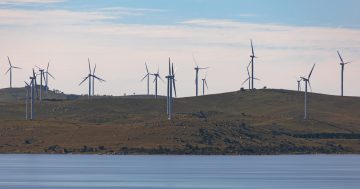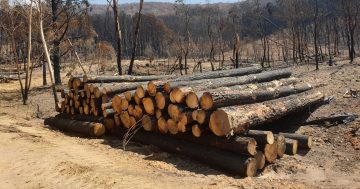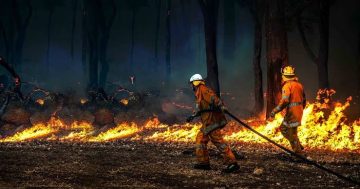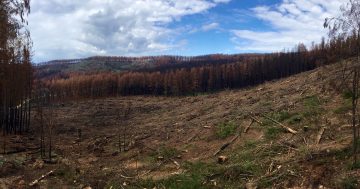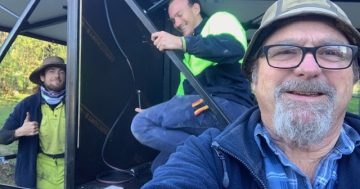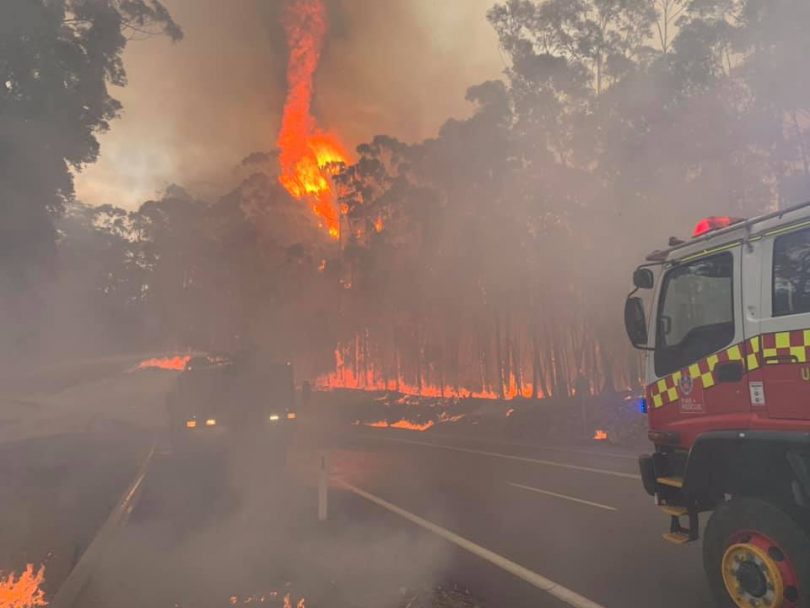
The Currowan fire burning along the Kings Highway, west of Batemans Bay in January 2020. Photo: Ulladulla Fire and Rescue.
Petrol had to be taken from buses and local equipment to fuel firetrucks along the NSW South Coast during the Black Summer bushfires of 2019/2020 after electricity went out in the Eurobodalla Shire, the Royal Commission into National Natural Disaster Arrangements heard.
Firefighting operations in the region were also impeded by ad-hoc emergency operations centres, a lack of critical infrastructure and the sheer destruction of the fires.
Eurobodalla Shire Council’s local emergency management officer, Warren Sharpe, described emergency operations centre arrangements as “well below the required standards”.
“Our emergency operation centre is quite a makeshift set-up in the local Moruya RSL hall,” he told the Bushfire Royal Commission.
“It takes several hours to set that up. Initially take boxes full of phones, wires and cables, and go and establish an emergency operations centre.”
The need for changes to telecommunication networks and emergency response practices was echoed by Eurobodalla Shire Council Mayor Liz Innes.
“We have to look at why our power network went down and how we can ensure we have resilience embedded into that,” she told Region Media. “There are some serious lessons to be learnt there.
“It was desperate times when we, as the council, and the RFS [NSW Rural Fire Service] were trying to get information out to the community, who were desperately needing that information.”
Crucial power lines which were impacted by the fire flashover north of Batemans Bay were not identified as critical infrastructure before power was lost.
“I have suggested we include those two lines to highlight their critical nature to our community, and that we continue to have further discussions with Essential Energy, Endeavour Energy and the NSW Government about how we can make those more resilient,” Mr Sharpe told the Bushfire Royal Commission.
The availability of water was also impacted by the power outages.
“When the fire hit, we only had one source of water – which was from the northern treatment plant – to distribute to the whole community [because of the drought],” said Mr Sharpe.
“With a loss of power, our crew had to work very long hours back-to-back, day after day, to manually operate the system, and had to make some absolutely crucial decisions to extract water from a pool of water in the Moruya River.
“[We had to] pump that to the south to ensure we could keep up an adequate supply in front of firefighting.”

The Currowan fire from Batemans Bay. Photo: Josh Burkinshaw Images.
A second water storage facility would cost around $105 million, but council has only been able to secure $25 million in funding so far.
“Council has called on the Federal Government to pay for half of the remaining $80 million and the council would cover the rest of the cost,” said Mr Sharpe.
The Bushfire Royal Commission also heard that the role of Eurobodalla Shire Council in bushfire preparation and response is limited by the role of government agencies controlling the majority of land in the council.
“Our council area is heavily timbered and bushed, with about 78 per cent of our land in national parks, Crown Lands or Forest NSW [Forestry Corporation of NSW],” said Mr Sharpe.
“The responsibility for undertaking hazard reduction burning in a national park, or within the forestry, obviously sits with those agencies and is coordinated through their activities with the RFS.
“So those agencies, as land managers, obviously have the primary responsibility in that place.”
The Forestry Corporation of NSW – which manages more than two million hectares of NSW state forests – has been criticised for not clearing its logging waste, including from Member for Bega Andrew Constance.








